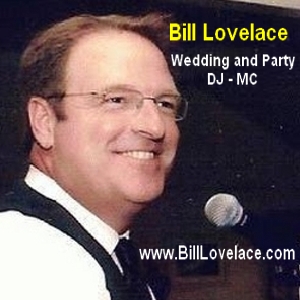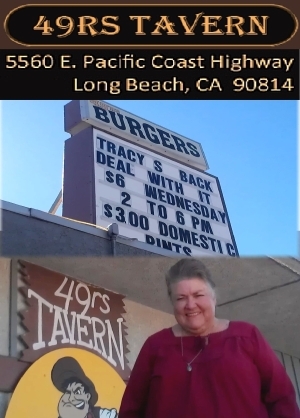The parking-pertinent provision in SB 35 is below:
[SB 35 proposed text] (d) (1) Notwithstanding any other law, a local government, whether or not it has adopted an ordinance governing parking requirements in multifamily developments, shall not impose parking standards for a streamlined development that was approved pursuant to this section in any of the following instances:
(A) The development is located within one-half mile of public transit.
(B) The development is located within an architecturally and historically significant historic district.
(C) When on-street parking permits are required but not offered to the occupants of the development.
(D) When there is a car share vehicle located within one block of the development.(2) If the development does not fall within any of the categories described in paragraph (1), the local government shall not impose parking requirements for streamlined developments approved pursuant to this section that exceed one parking space per unit.
(e) (1) If a local government approves a development pursuant to this section, then, notwithstanding any other law, that approval shall not expire if the project includes public investment in housing affordability, beyond tax credits, where 50 percent of the units are affordable to households making below 80 percent of the area median income.
(2) If a local government approves a development pursuant to this section and the project does not include 50 percent of the units affordable to households making below 80 percent of the area median income, that approval shall automatically expire after three years except that a project may receive a one-time, one-year extension if the project proponent can provide documentation that there has been significant progress toward getting the development construction ready, such as filing a building permit application.
(3) If a local government approves a development pursuant to this section, that approval shall remain valid for three years from the date of the final action establishing that approval and shall remain valid thereafter for a project so long as vertical construction of the development has begun and is in progress. Additionally, the development proponent may request, and the local government shall have discretion to grant, an additional one-year extension to the original three-year period. The local government’s action and discretion in determining whether to grant the foregoing extension shall be limited to considerations and process set forth in this section.(f) A local government shall not adopt any requirement, including, but not limited to, increased fees or inclusionary housing requirements, that applies to a project solely or partially on the basis that the project is eligible to receive ministerial or streamlined approval pursuant to this section...
...(h) For purposes of this section: (1) “Department” means the [CA state] Department of Housing and Community Development.
(2) “Development proponent” means the developer who submits an application for streamlined approval pursuant to this section.
(3) “Completed entitlements” means a housing development which has received all the required land use approvals or entitlements necessary for the issuance of building permit.
...(6) “Subsidized” means units that are price or rent restricted such that the units are permanently affordable to households meeting the definitions of very low and lower income, as defined in Sections 50079.5 and 50105 of the Health and Safety Code.
...(8) “Urban uses” means any current or former residential, commercial, public institutional, transit or transportation passenger facility, or retail use, or any combination of those uses.
(i) The department may review, adopt, amend, and repeal guidelines to implement uniform standards or criteria that supplement or clarify the terms, references, or standards set forth in this section. Any guidelines or terms adopted pursuant to this subdivision shall not be subject to Chapter 3.5 (commencing with Section 11340) of Part 1 of Division 3 of Title 2 of the Government Code.
Sponsor | Sponsor |
To avoid SB 35's mandatory approval consequences, the City would have to meet and produce new housing building permits in numbers decided by the So. Cal. Ass'n of Gov'ts (SCAG), which periodically issues a Regional Housing Needs Assessment (RHNA). SCAG periodically updates (almost always increases) required numbers in its RHNA with approval by a SCAG decision making body that consists of 86 electeds covering six So. Cal counties in which LB is allowed two Mayor-chosen appointees.
If a city fails to issue sufficient permits in every RHNA housing income category -- specifically including "affordable [low income rental] housing" -- SB 35 would effectively require that city to approve developer-desired housing projects without public hearings and without CEQA/EIR review in any parts of the city where they're allowed under LB zoning. Sac'to lawmakers also inserted verbiage in SB 35 [likely to gain support from building trade unions] requiring private developers to pay workers a government-set "prevailing wage" (normally required in contracts with government entities) for housing projects of 10 units or more.
In response to an LBREPORT.com email inquiry, the City of LB's Director of Development Services, Amy Bodek, confirmed that the City of Long Beach would be subject to SB 35's mandates at this time.
The city of LB's Manager of Government Affairs, Diana Tang, tells LBREPORT.com (Aug. 29) that the City is currently officially neutral on SB 35, but is "working with the author on amendments, consistent with the City's state legislative agenda as it relates to local control."
On June 1, SB 35 cleared the state Senate on a 25-12 vote...with "yes" votes from state Senator Ricardo Lara (D, LB-Huntington Park) and state Senator Janet Nguyen (R, SE-LB/West OC).
If SB 35 were enacted in its present form by the Assembly in the coming days, the public would no longer have the opportunity to testify regarding (for example) the proposed housing development at 320 Alamitos Ave. (a proposed seven story residential building supported by city staff but opposed by adjoining Alamitos Beach neighborhood residents on parking grounds.) The developer has offered to provide 105 parking stalls for 77 residential units, and that level meets and exceeds the parking required under Downtown density zoning (one space per residential unit plus one more for every four residential units, approved in Jan. 2012 by the Council on motion by then-Councilman Robert Garcia.)
Sponsor |  |
In that respect, SB 35 could arguably trigger a "perfect density storm" as Long Beach city staff is currently advancing (and LB's City Council will ultimately decide on) a complete revision of LB's land uses citywide. City staff has proposed maps at this link showing increased density and heights at various locations citgywide. If these are aadopted by the Council, they would trigger LB zoning changes to match. In city's where SB 35 would apply (like LB at present), its mandates require allowing new housing in areas where city zoning allows housing. That would presumably enable developers to demand and receive permits to build housing projects nearly anywhere (very few exceptions) ultimately zoned by the Council to allow residential development (presumably including "mixed use" commercial + residential developments) stemming from whatever new land use maps (which propose increased density) are approved by the Council.
Sponsor | Sponsor |
At the Aug. 17 Planning Commission meeting, a member of the public raised the issue of SB 35...and Ms. Bodek commended the public speaker for doing so and proceeded to advise the Planning Commission of SB 35's potential impacts:
...I first want to say thank you to the woman who raised it because I think that’s incredibly important that citizens understand the regulations that we are forced to confront and the history pattern.Cities are not dealing with the housing crises as they're supposed to. Because of that, the legislature has continued to constrain over the years the cities’ abilities to regulate housing in particular because there are many cities who are not as forthcoming and embracing change in density. So as a counter reaction to local agencies who have over, and I'm talking about the last 30 years, refused to comply with housing requirements, the state has continually forced local jurisdictions hands and you can see that in our accessory dwelling unit regulations that have come down from the state...
SB 35 is going to be a similar issue if it is in fact adopted. I think it will be very difficult for us from all zoning perspectives, less so from a general plan perspective because our general plan has been carefully thought out about where the density is going and not throwing density willy nilly in single family residential neighborhoods. We are trying to focus them on areas of change and certainly commercial corridors and linking them to transit. But we are very concerned about activities at the state level and how they intend to take away any local control and SB 35 is a perfect example of that because they will absolutely take away the local control and we will not have the ability to have public hearings on residential projects if SB 35 proceeds.
And so there are implications we don't know how to consider those implications because that law is not far enough along for us to know whether amendments are going to be proposed and accepted by the state legislature but until that happens we cannot specifically say what those impacts are but I absolutely applaud this constituent who brought it up. I think it’s fabulous and frankly critical for there to be an understanding of why this state does this and how that ties our hands locally.
On Aug. 28, Capital Public Radio News reported (at this link) that Governor Brown and Sac'to legislative leaders including Assembly Speaker Anthony Rendon (D, NLB-Lakewood-Paramount) have reached agreement to advance SB 35 as part of a legislative package of bills dealing with housing. The bills include SB 3, a measure that would require statewide voter approval, for a debt-bond that would let developers leverage substantial federal and local taxpayer sums for low income housing.
In an August 29 release, SB 35's author, state Senator Scott Wiener (D, San Francisco) announced that SB 35 now has the support of L.A. Mayor Eric Garcetti, joining Mayors (all Dems) from San Jose, San Francisco, Oakland and Sacramento. Under LB's City Charter, LB Mayor Robert Garcia can (and frequently does) express his views and recommendations but has no authority to determine LB city policy which is set by the City Council.
Sen. Wiener's office indicates SB 35 is now supported by:
SB 35 is opposed by the League of CA Cities and a number of cities statewide. A June Assembly Committee legislative analysis of SB 35 listed opponents including:
In a draft letter prepared for cities to submit in opposition to SB 35, the League of CA Cities makes the following argument in pertinent part:
Eliminating opportunities for environmental and public review of major multifamily developments goes against the principles of local democracy and public engagement. Public hearings allow members of the community to inform their representative of their support or concerns. "Streamlining" in the context of SB 35 appears to mean a shortcut around public input and environmental review. While frustrating for some to address neighborhood concerns about traffic, parking and other development impacts, those directly affected by such projects have a right to be heard. Public engagement also often leads to better projects. Not having such outlets will increase public distrust in government and additional ballot measures dealing with growth management...
Supporters of SB 35 say the bill doesn't undermine local control because it still allows local control over zoning (deciding where new housing will be allowed) but no longer allows cities to prevent developers from producing new housing [at levels government.at other levels has determined is necessary.]
On May 2, 2017, the LB City Council voted 8-0 (Mungo absent for entire meeting) to adopt a series of policies to promote what government entities deem "affordable housing," which included the following: "Support California Environmental Quality Act (CEQA) reform through City's legislative actions that encourages the production of affordable and workforce housing" [changing parts of CEQA to make it easier for housing developers to gain swifter City approval for their desired projects and make it harder for residents to mount challenges and appeals]. A few months earlier, the City Council set the stage for this by voting to support Sacramento actions that would make such changes to parts of CEQA.
At that time, Councilman Al Austin (who chairs the Council's Mayor-chosen State Legislation Committee) said he considers such CEQA changes appropriate, noting that some residents [CARP, Citizens About Responsible Planning] had challenged and slowed a housing development in his district [Riverwalk] -- calling the residents' challenge without merit. [Multiple residents urged the Council to make changes to the project; Councilman Austin and the Council declined to do so; CARP then hired a lawyer, filed suit and reached a settlement with the developer that resulted in some changes to the development.]
During May 2 Council discussion, Ms. Bodek said one way the Council could promote affordable housing is by increasing allowable density as part of staff's now-advancing Land Use Element rewrite. (To hear the May 2017 exchange between Councilwoman Lena Gonzalez and Ms. Bodek, click here.).
In August, 2017 city staff issued maps showing areas where city staff proposes land use changes that would allow increased density and building heights (which can be viewed at this link.) If the Council ultimately approves these (or other) Land Use changes, the city would then proceed to make its LB's zoning consistent with the new density-inviting Land Use element.
Under SB 35 as currently written, the City wouldn't be able to say "no" if a developer sought to build new housing at nearly all locations where residential development would be allowed.
Developing.
[Wiener release text] the State Building & Construction Trades Council, the California League of Conservation Voters, Non-Profit Housing Association of Northern California, the California Council for Affordable Housing, the Natural Resources Defense Council, the California Apartment Association, California Association of Realtors, the League of California Community Foundations, the Council of Infill Builders, the League of Women Voters of California, California Asian Chamber of Commerce, Mercy Housing, Bridge Housing, the Mission Housing Development Corporation, the Silicon Valley Leadership Group, the San Francisco Chamber of Commerce, the Los Angeles Chamber of Commerce, the Bay Area Council, County of Napa, the San Francisco Housing Action Coalition, Abundant Housing LA, East Bay Forward, YIMBY Action, and others.
[MAJOR CAVEAT: recent amendments may have removed some June opponents]: Affordable Housing Alliance, AIDS Housing Alliance SF, Alliance for Community Transit – LA, Alliance of Californians for Community Empowerment (ACCE) Action, American Federation of Teachers Local 2121, Anti-Eviction Mapping Project, Asian Pacific Environmental Network, California Professional Firefighters, Causa Justa::Just Cause, Chinatown Community Development Center, City of Citrus Heights, City of Fremont, City of Roseville, City of Thousand Oaks, City of Vallejo, Coalition for San Francisco Neighborhoods, Council of Community Housing Organizations, Courage Campaign, Dolores Street Community Services. Eastern Neighborhoods United Front, Esperanza Community Housing Corporation, Faith in Action Bay Area, Faithful Fools Street Ministry. Homeownership San Francisco, Hospitality House, Housing Rights Committee, Housing Rights Committee of San Francisco, Jobs with Justice, Koreatown Immigrant Workers Alliance (KIWA), LA Forward, La Raza Centro Legal, LA Voice, League of California Cities, Little Tokyo Service Center, Long Beach Residents Empowered (LiBRE), Manilatown Heritage Foundation, Mission Economic Development Agency, Pacific Advocacy Group, People Organizing to Demand Environmental and Economic Rights (PODER), Sacred Heart Community Service, SAJE, San Francisco Day Labor Program and Women's Collective, San Francisco Information Clearinghouse, San Francisco Latino Democratic Club, San Francisco Tenants Union, Santa Monicans for Renters' Rights (SMRR), Senior & Disability Action, SF Tenants Union, South of Market Community Action Network, Sunset-Parkside Education and Action Committee, San Francisco, Swords to Plowshares, Tenants Together, T.R.U.S.T. South LA, Unite HERE Local 2, United Educators of San Francisco, Urban Habitat, Veterans Equity Center.
...SB 35 is devised as a solution to the state’s needs for market rate and affordable housing, however it dodges the reality that state and federal affordable housing funding have slowed to a trickle. More than $1 billion annually in affordable housing money has evaporated with the elimination of redevelopment agencies in 2011. Funds from the 2006 state housing bond have been exhausted and federal dollars have been declining for decades. This massive withdraw of resources has contributed to the current challenges, yet no significant source of ongoing affordable housing funding is on the horizon...
blog comments powered by Disqus
Recommend LBREPORT.com to your Facebook friends:
Follow LBReport.com with:
RSS |
Contact us: mail@LBReport.com





Hardwood Floor Specialists
Call (562) 422-2800 or (714) 836-7050
